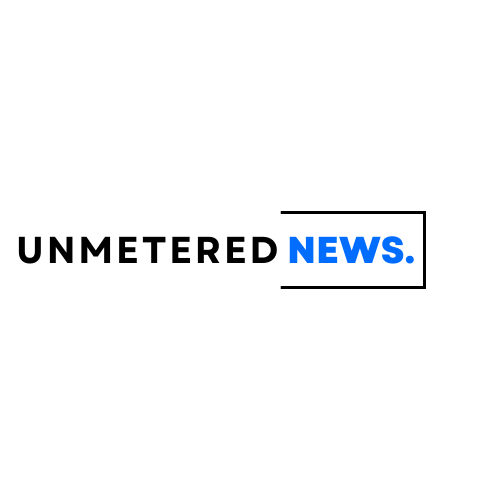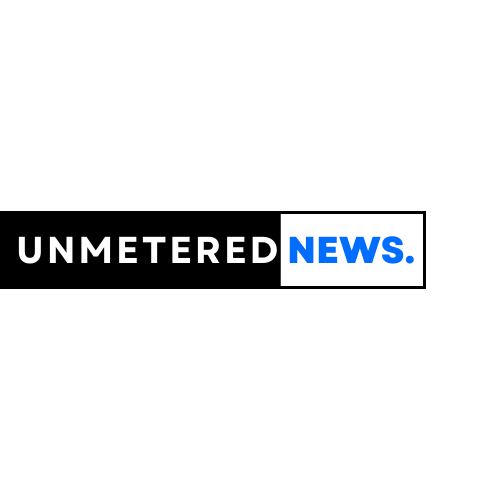- Home
- Advertise With us
- World News
- Tech
- Entertainment
- Travels & Tours
- Contact US
- About us
- Privacy Policy
Top Insights
How Things Could go from Worse to Devastating for Iran


CIPHER BRIEF REPORTING – Given the state of damage Iran has suffered since Israel launched a devastating round of airstrikes targeting nuclear and military leaders last Thursday – and an increasing sense of urgency in Washington, experts are gauging the potential for things to go from worse to devastating not only for Tehran’s nuclear program, but for its regime.
As the U.S. reportedly relocates refueling aircraft to Europe, Israel’s military says it now has complete control over Tehran’s air space. Israeli officials are issuing evacuation warnings to many of the 10 million Iranians living in parts of the capital that may be targeted in the coming days. And that warning was reiterated by President Donald Trump as he abruptly left a meeting of G7 leaders in Canada on Monday.
“Iran should have signed the “deal” I told them to sign,” President Trump posted on social media. “What a shame, and waste of human life. Simply stated, IRAN CAN NOT HAVE A NUCLEAR WEAPON. I said it over and over again! Everyone should immediately evacuate Tehran!” wrote President Trump as the White House announced he was leaving the G7 meeting early “because of what’s going on in the Middle East”.
The World Wants to Know, What’s the Plan?
Both Russian President Vladimir Putin and Chinese leader Xi Jinping have offered to play a role in de-escalating the situation but President Trump says he’s working on something much bigger than a ceasefire.
“We have plans,” General Frank McKenzie, former Commander of U.S. Central Command told The Cipher Brief in a video interview on Friday, just hours after Israel’s airstrikes began. When asked whether the potential for U.S. involvement in Israel’s ongoing operation would be something that U.S. military planners are considering in a case like this, McKenzie explained, “We have plans for virtually any contingency in the Middle East, including this particular contingency, and we would be prepared to execute those plans if the President of the United States directed us to do so.”
While the president hasn’t yet detailed what his plans might be, he has directed the deployment of more than 30 U.S. refueling aircraft to the region. The USS Nimitz is also expected to join assets that are already pre-positioned for any potential U.S. military engagement.
How Bad is It for Iran Right Now?
Israel has already inflicted significant damage on Iran’s nuclear and military program since its airstrikes began five days ago. “The Israelis have inflicted profound damage that will set back the nuclear program many months, if not years,” former National Intelligence Manager for Iran at ODNI, Norm Roule told The Cipher Brief. “The damage includes the loss of significant personnel, with the killing of multiple senior nuclear program managers who understood how to build, manage, and maintain large nuclear programs.”
Roule says the destruction of Iran’s above-ground installations has cost Iran a key centrifuge facility and a power facility, and that the attack on the power facility likely also damaged thousands of underground centrifuges, due to the sudden loss of power.
“The destruction of a uranium-metal production facility, conversion plant, and fuel fabrication buildings at Esfahan set back a key aspect of the program needed for weaponization and fuel production,” said Roule. “The attacks appear to have caused above-ground damage at Fordow, but most of the facility remains intact, underground. Until Fordow is destroyed, Israel will not have achieved the nuclear-related goals of this operation.”
Roule estimates that complete destruction of the Fordow facility will likely require either U.S. military involvement or Iran’s voluntary dismantling of the site as part of the nuclear deal as laid out by the U.S. Administration.
But the broader damage to the country’s military has been profound and likely permanent, according to experts who note that Israel’s initial raids wiped out most of the country’s senior nuclear and military leadership, destroyed much of its air force and eroded a significant portion of its missile launch capability.
“The regime may control the streets of Tehran in name, but Israel effectively controls its near-term future,” said Roule. “Jerusalem will decide which ministries will remain intact, whether fuel depots will be destroyed, and so on. And to use a regime phrase often directed against the U.S. and Israel by Iran’s leaders since the beginning of the Islamic Republic, there “isn’t a damn thing (the Islamic Republic) can do about it.” Indeed, the Supreme Leader of Iran has effectively gone into hiding to stay alive.”
How Much Worse Could it Get?
Cipher Brief Expert and former NATO Supreme Allied Commander retired Admiral James Stavridis, writing in Bloomberg, said a possible strategy for destroying Iran’s nuclear program – as part of a joint Israeli-U.S. operation – would likely begin with a comprehensive cyberwar campaign “probably coinciding with an onslaught of cruise missiles and drones attacking Tehran’s remaining Russian-supplied S-300 and S-200 air-defense stations, and Iranian surface-to-air systems like the Bavar 373 or Khordad 15. The cyber-offensive would best be set off inside Tehran’s military electric grid: The Israelis probably have that ability — essentially cyber-boots on the ground” eventually leading to “heavy air strikes, probably led by US B-2 Spirit strategic bombers carrying 30,000-pound Massive Ordnance Penetrators, aka “bunker busters.”
If Iran Strikes Back
Many experts agree that Iran, which has launched a series of retaliatory missile strikes against Israel since Thursday, would increase the number of missile strikes as well as “bombings at U.S. and Israeli embassies and commercial facilities worldwide would be likely and cyberattacks a certainty,” according to Stavridis.
“Tehran might close the Strait of Hormuz with mines, small craft and short-range surface-to-surface missiles,” Stavridis wrote in Bloomberg, “This would shut down 35% of the world’s oil and gas shipments, and it would take perhaps months for the U.S. and allies to reopen it. Tehran might also strike at Saudi or UAE offshore oil and gas facilities or even attack the Saudis’ main energy facilities on land.
Perhaps the biggest concern expressed by U.S. leaders both officially and unofficially since Thursday’s attacks began, is the potential for Iran to target American military personnel stationed in the region, who are well within range of Iranian missiles. According to McKenzie, those missiles could “gain a much higher volume of fires against those targets”.
“But here’s the problem,” he told us. “If they did that, they’re going to kill Americans. That’s probably going to bring the United States into this war. And if the United States comes into this war as a result of an Iranian attack on American troops, I don’t know that regime change would be off the table. They’ve got to be very much aware of this. We should remember that the overall priority for Iranian state craft remains regime preservation.”
The Implications of Regime Change
Sources have reported that President Donald Trump objected to an Israeli plan early on to target Iran’s Supreme Leader, Ayatollah Ali Khamenei. But as the conflict escalates and Trump puts more pressure on Iran to return to the negotiating table over its nuclear program, the idea of regime change – according to some experts – shouldn’t be off the table.
“His death would throw an already-confused regime into even more chaos, making regime collapse and change more likely,” said Roule. “Most of the world’s Shi’a follow leaders who advocate a less severe and less activist form of religious rule. He will have followers within Iran and outside, particularly among Lebanese Hezbollah, who will seek revenge and blame the United States for his killing.”
While the U.S. and Israel have killed other senior Iranian leaders in the past, including Hasan Nasrallah, Quds Force General Qassem Soleimani, Yahya Sinwar, and others, threat of retaliation didn’t have much of an impact. “But the Supreme Leader is in a different category,” says Roule. “Targeting him has likely been the subject of considerable debate within Israel, weighing the risks against the potential gains.”
It was a U.S.-led drone strike that killed General Soleimani in January, 2020 prompting fears then of massive retaliation. “It is impossible to overstate the significance of this action,” former CIA Director General David Petraeus (Ret.) told us at the time. “Soleimani was, in U.S. terms, a combination of CIA Director, JSOC Commander, and Special Presidential Envoy for the Mideast. He was the second most important person in Iran and the architect and commander of Iranian initiatives to solidify control over the Shia Crescent. He had the blood of hundreds of American and coalition soldiers on his hands and that of countless of our Iraqi and partner elements in the region.”
Roule estimates that if the Supreme Leader were to be targeted or killed in the current operation, “the weight of regime decision-making would shift dramatically, likely to a hardline group of Khamenei’s current inner circle advisors who are closely allied to the Revolutionary Guard. Appointing a successor would be difficult in wartime, but it may be possible, particularly if seen as a placeholder. Any successor would lack Khamenei’s stature, however, and thus wouldn’t strengthen the regime in the long term.”
Roule proposes additional considerations if in fact the regime were to fall, including the possibility of a military coup led by Revolutionary Guard officials, warning that if the country falls into chaos, it will be important to secure nuclear material as quickly as possible.
What Instruments of Power Does Iran Still Have?
Iran’s regional proxies – nurtured at a cost of billions of dollars over many years – have lost the majority of their power. Iran’s stronghold in Syria disintegrated with the overthrow of former President Bashar Al-Assad. Hamas has lost its leadership and its ability to launch any kind of significant attack after years of Israeli decimation following the brutal terrorist attack it launched on Israel in October of 2023.
“Iran has a real problem because they also lost Lebanese Hezbollah, which was their strategic hedge against Israel,” said General McKenzie. “They’ve been decapitated. They will replace commanders. They have people they can bring up, so the Quds force will remain a potent and capable force. That’s not going to go away. But again, it serves the ultimate ends of Iranian policy. So, the question to ask is really, where’s Iranian policy going to go?”
Everyone needs a good nightcap. Ours happens to come in the form of a M-F newsletter that keeps you up to speed on national security. Sign up today.
Read more expert-driven national security insights, perspective and analysis in The Cipher Brief because National Security is Everyone’s Business.
Related Articles
Live Updates: Trump Calls for ‘Unconditional Surrender’ From Iran
Evidence continued to grow that the United States was considering joining Israel’s...
Elon Musk’s AI Company Faces Lawsuit Over Gas-Burning Turbines
The company, xAI, has installed several dozen turbines in Memphis without proper...
Israel Says It Killed a Top Iranian Military Leader as Trump Calls for Iran’s Surrender
Maj. Gen. Ali Shadmani had been in the job for mere days....
‘I’ll Never Try Again’: For Some Gazans, Seeking Aid Is Just Too Risky
The Gaza health ministry said that more than 50 Palestinians were killed...










Leave a comment